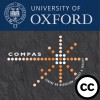Identification and mobility Control: Police sciences, technology, and international cooperation in West Europe, 1900-1930
This development began before the establishment Interpol's forerunner. The attempt to develop an international language and index to identify criminals that were moving across borders saw several ups and downs. Migration scholars and NGOs have often sought to disassociate popular associations between criminality and immigration: migrants are not criminals, nor are they necessarily more likely to commit crime. But this risks ignoring important relationships between immigration and criminality, both 'immigrant' and 'criminal' for example, are set in opposition to the (good) citizen, both are important administrative categories for states, and comprise groups upon whom the state can exercise significant degrees of coercion. Both are highly racialised. There are also historical continuities: mobility has long been associated with criminality, through vagabondage and the problem of 'masterless men', gypsies and Roma, and 'illegal immigrants'. Both groups can share social and political disabilities - in the US former prisoners are not eligible for further education grants, cannot access welfare payments or food stamps, and in 10 states, are denied the right to vote for life. This seminar series will interrogate the relation between immigration, criminality and citizenship, by exploring these issues.




